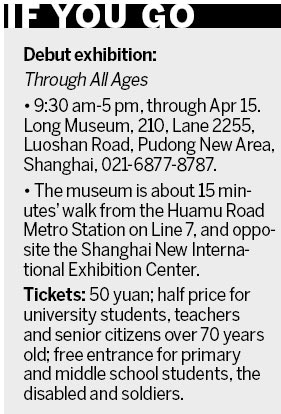Art bought in Hong Kong is subject to taxation upon entering the mainland. An investigation into widespread tax evasion by transportation and auction companies disrupted the art market in and out of China and largely affected the transfer of art to the mainland since mid-2012.
"Artworks that show up on the auction market are proven to be of considerable quality and authenticity," Wang explains.

Her husband Liu is known as an aggressive buyer ready to pay extremely high price for his chosen pieces. While Liu is focused on ancient Chinese art, Wang has been intentionally building her series of modern and contemporary Chinese art.
Quest for modern art
"Few museums in China have made systematic collections of modern and contemporary Chinese art, which only started since the 1980s," contemporary art critic Lu Peng says.
"A large number of modern Chinese oil paintings created before 1949 went missing because of the continuous wars, political movements and the lack of study of art history.
"Also, even fewer art institutions in the Chinese mainland have systematic collections of contemporary art."
In this context, the Long Museum has filled a huge gap in the official artistic establishments in China, critics agreed.
It's never too late to start collecting art, Wang says. Her collection of contemporary Chinese art has extended to the latest works by artists in their 20s and early 30s. "It may be difficult to start with established artists, but you will have a high sense of fulfillment discovering emerging artists," she says.
Ai Xuan, an oil painter of the realistic style, once asked Wang Wei's opinion of the popular animation style in today's art scene.
"It's a product of the time," she replied. "We may not give it an objective evaluation, but only pick the best of it, and let the future decide its value."
